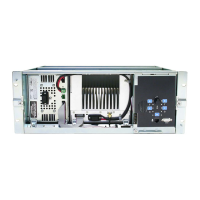124 Part F: Configuring Channels © Tait Electronics Limited December 2007
Transmit options Lets you choose what happens if the base station is transmitting when the
interval between identity broadcasts has elapsed.
Tip: Use the Task Manager action Transmit CWID now to set up
identity broadcasts in ways that the Automatic CWID system area
does not permit.
Task Manager
In the Add or Edit Channel Profile dialog box, the Task Manager tab opens a
Task Manager form and displays the tasks that apply to the selected channel
profile. Use it to edit or add Task Manager inputs and actions that apply to the
channel profile.
Option Description
Immediate The CWID burst is transmitted immediately, in spite of the fact
that the base station is transmitting. Both CWID and audio are
transmitted together.
Select this option for trunking control channels, which transmit
continuously.
After audio The CWID burst is delayed until after the audio has ended or
the transmitter is de-keyed. The hang time does not begin until
the CWID burst has finished. Users with subaudible signalling
enabled hear the burst.
This option is suitable for trunking traffic channels, particularly
if they do not have subaudible signalling.
After signalling The CWID burst is delayed further, until the hang time has
expired and any reverse tone burst or DCS end tone has been
sent. This means that the CWID burst is transmitted after any
subaudible signalling has ended. The soft-off time does not
begin until the CWID burst has finished. Users with subaudible
signalling enabled do not hear the burst.
This option is suitable for trunking traffic channels, particularly
if they have subaudible signalling.

